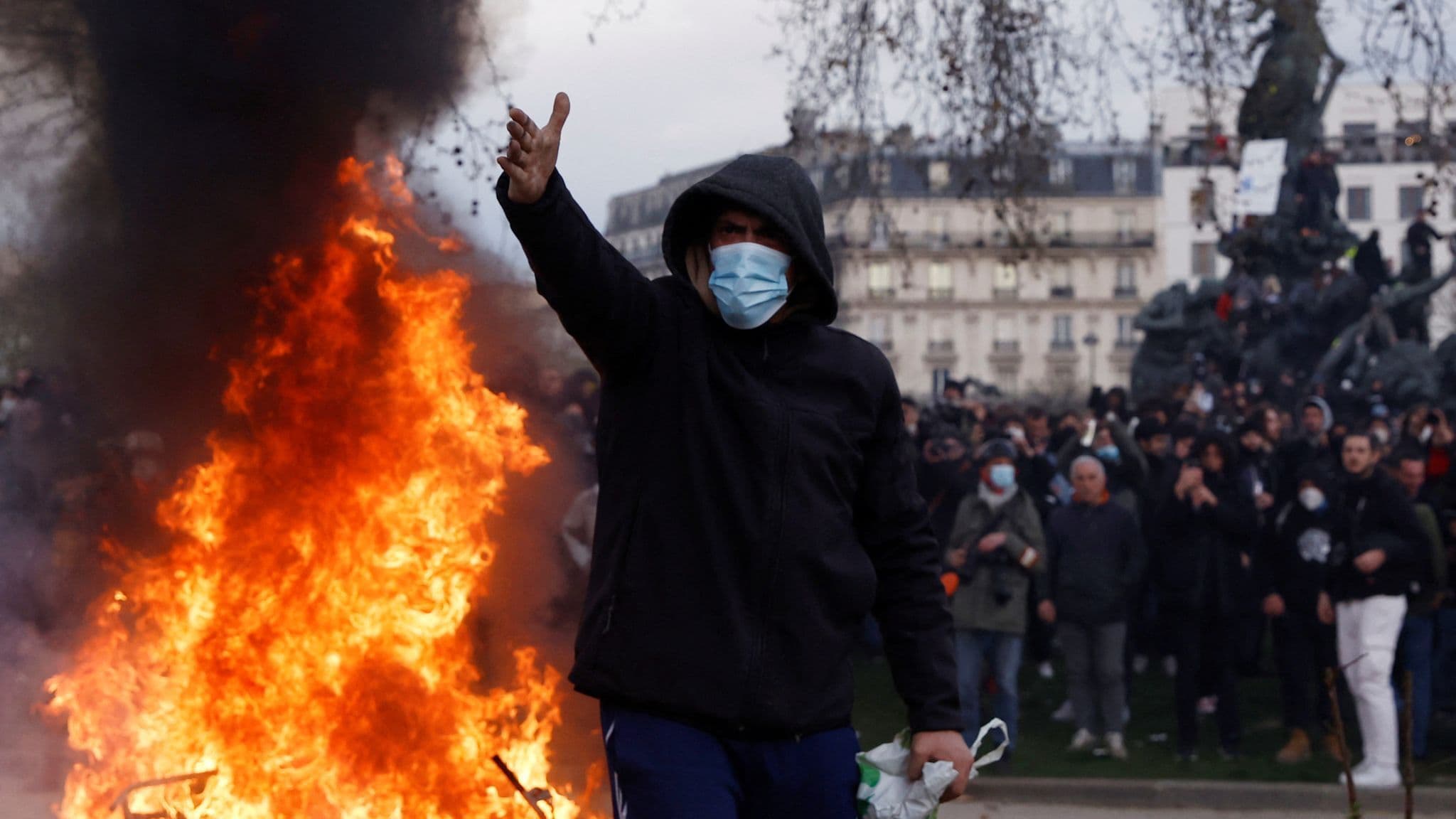Do revolutions have to be violent?

“We all want to change the world”, sang John Lennon, a sentiment most of us could agree with. Lennon was inspired by the widespread political protests of the late 1960s, including mass strikes by French workers that nearly brought down the government. It seemed back then that radical change was on the agenda.
But it didn’t happen, and today the need to change the world is more urgent than ever. Climate change and the drive to war threaten the lives of hundreds of millions. And then there’s the routine business as usual of capitalism. Every day, millions of people die or have their lives ruined by war, hunger, disease, homelessness, industrial “accidents”—most of which are the direct product of our rulers’ insatiable drive for profits.
“But when you talk about destruction”, continued Lennon, “Don’t you know that you can count me out”—another sentiment that many would agree with. Even though the world is going to hell in a handbasket, the idea of revolution—and the violence that is associated with it—just seems too extreme. Surely there’s a more peaceful way?
It’s completely understandable that people shrink from violence. But unfortunately, attempts to reform the system peacefully have failed miserably—usually because violence is used by the wealthy and powerful to prevent any meaningful change.
Violence is deeply embedded in capitalist society. As Karl Marx wrote, “capital comes dripping from head to foot, from every pore, with blood and dirt”. It wields its enormous destructive power on a daily basis. So revolution is not about destruction, it’s about stopping our rulers’ ability to use violence against us.
The need for revolution arises from the nature of capitalist society. Capitalists are a tiny minority who profit from exploiting the labour of the vast majority. They rely on the state—with its armies, police, courts, jails and so on—to maintain this situation. Far from being a neutral institution, the state exists to defend capitalist interests, against both foreign rivals (hence the unending wars) and opposition from below, especially from the working class.
So, fundamentally, revolution is about winning the battle for democracy—not the sham we have now, but a genuinely equal society. That means taking the wealth and the means to produce it away from the capitalists and using it to satisfy human needs. That is the basis of socialism.
Only the working class can do that. Only they can challenge the capitalists’ rule by stopping the flow of profits at the source. An organised working class is the only power that can match and defeat the power of the capitalist state. Every strike gives us a glimpse of this potential. By standing together and withdrawing their labour, workers can win concessions such as wage rises and improved conditions.
But to transform society, this needs to happen on a mass scale. A revolution cannot be the act of a minority or a conspiracy. It can succeed only when the majority of workers, from every sector, assert their power, not only to cut off the bosses’ profits, but to take production into their own hands and reorganise it completely.
That is something the capitalist state will simply not allow. It will use all the repressive forces at its disposal to stop such a thing occurring. That’s the source of most of the violence associated with revolutions—or any serious challenge to capitalist rule. Whenever the capitalists feel threatened, they respond with the most hideous violence.
For example, the Paris Commune of 1871, the first attempt to create a democratic workers’ state, was ruthlessly smashed. More than 30,000 were slaughtered and 15,000 arrested. In Chile in 1973, the mildly reformist government of Salvador Allende was overthrown by a military coup, leading to the massacre of tens of thousands of workers, while countless others disappeared into General Pinochet’s jails.
More recently, think of the violent repression meted out to workers in the Middle East in the wake of the Arab Spring, the torture and execution of protesters in Myanmar and Iran.
In Chile, Allende trusted the military not to intervene, and disarmed workers by assuring them that the army would not move against them. Similarly in 2011, Egyptian workers were deceived into thinking that the army supported their revolt, only to find themselves living under even worse terror than under the dictator Mubarak.
We have to be prepared to defend ourselves against such reprisals. For our side to renounce violence altogether means conceding defeat from the outset and condemning humanity to the continuing violence of capitalism. And we need to be clear that the state is our implacable enemy.
The state has a virtual monopoly of armed force. But a determined mass revolutionary movement can inspire sections of the army and police, many of whom come from the working class, to change sides—as for example when the women of Petrograd successfully appealed to the tsar’s Cossack troops not to fire on them in the 1917 Russian Revolution.
Holding back from revolution leaves the armed forces under the control of our rulers. As the French revolutionary Louis Saint-Just observed: “Those who make revolutions by halves dig their own graves”.
The reality is that the fight for a better world will not be won without some violence. The best way to minimise that violence is to build as large a movement as possible, one that can disarm and overwhelm the forces ranged against us. Such was the case in October 1917. The insurrection in Petrograd was nearly bloodless because the majority of workers, soldiers and peasants supported it.
Ultimately, the choice is not between violence and non-violence, but, as Rosa Luxemburg wrote over 100 years ago, between socialism and barbarism. And if we can create a world in which a tiny minority no longer control all the wealth, where wealth is used to eradicate poverty and need, the root causes of violence will disappear.